Complete guide to rubber plant care
Rubber plants come in a variety of colours and sizes. With their luscious leaves and unfussy nature, they’re the easy answer to elevating your home decor.
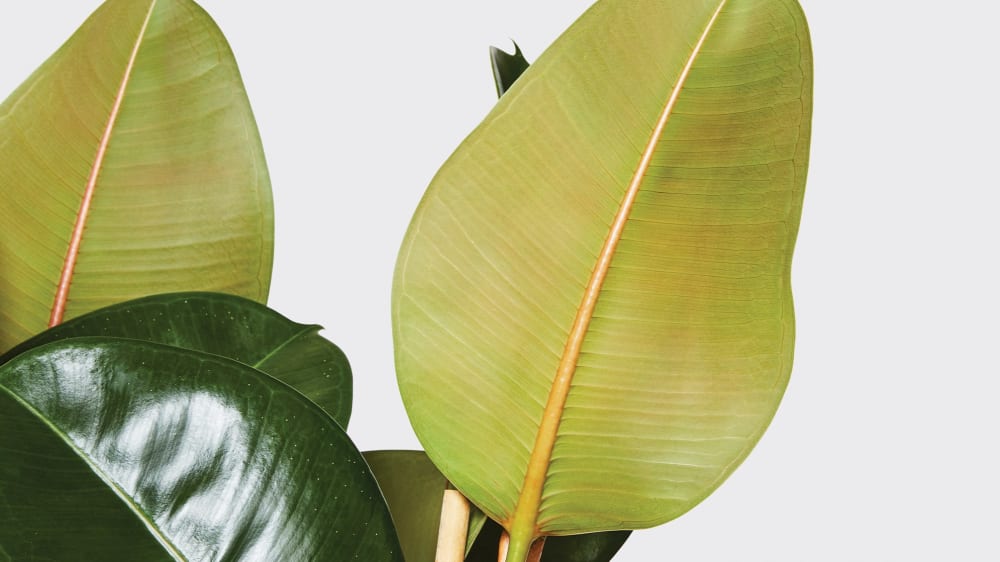
Low maintenance and eye-catching, rubber plants are an effortless way to add elegance to your home. With these simple steps, you can give your rubber plant the best chance to thrive.
- Water when the soil is almost completely dry. You’ll need to do this more often in the summer than in the winter
- Spray with a mister every few days, they like to keep their leaves moist
- Place in a bright room, but keep away from super sunny windows to avoid sunburn Between 15°C to 25°C is their optimum temperature
- Repot in spring when needed, using houseplant compost
- Wipe away dust with a clean cloth so the pores can breathe freely
- Feed with liquid fertiliser once a month in spring and summer
About rubber plants
Rubber plants (known scientifically as ficus elastica or ficus robusta) get their name from the milky white latex in their veins. The Mesoamerican people from way back in 1400BC used rubber plants as a key ingredient to make bouncy balls. In parts of India, people use their strong roots to make ‘living bridges’ over small rivers. But they’re best known today for being handsome houseplants with their silky sheen, creamy colours and air purifying qualities.
Rob the rubber plant is variegated, which means his leaves have unique patterns in shades of greens and creams, while his brother, Robin, has deep green leaves. Remi and Melika are trained to be tree-like and Reuben's pink-toned leaves are sure to add impact. Rubber plants can grow up to 60 metres tall when found in their native habitats in southern parts of Asia. Don’t worry if your ceilings aren’t quite that high though, because our rubber plants are house-trained and start a lot smaller.
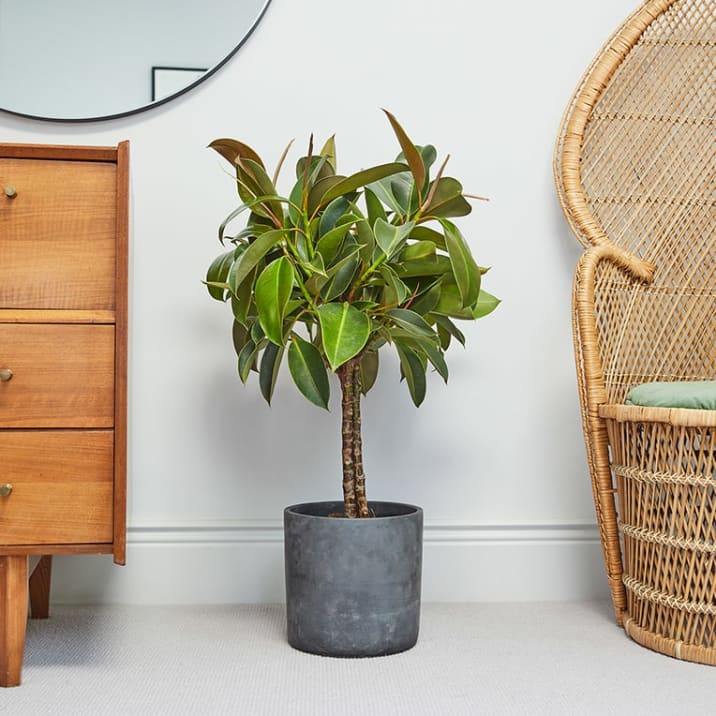
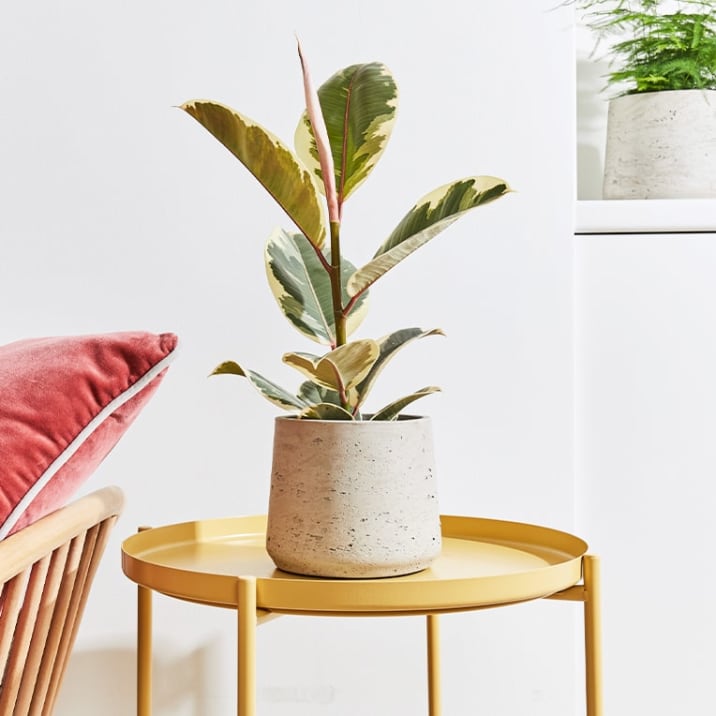
Are rubber plants easy to look after?
Rubber plants are easy to care for and can grow quickly under the right conditions. They’re sturdy, tolerant and simple to please. Keep their soil slightly moist, make sure they get plenty of sunshine, and if you’re at a comfortable temperature, they’ll be comfortable too.
Just be sure to keep rubber plants out of reach from small hands and little paws, as latex can be poisonous when ingested and can cause some skin irritation.
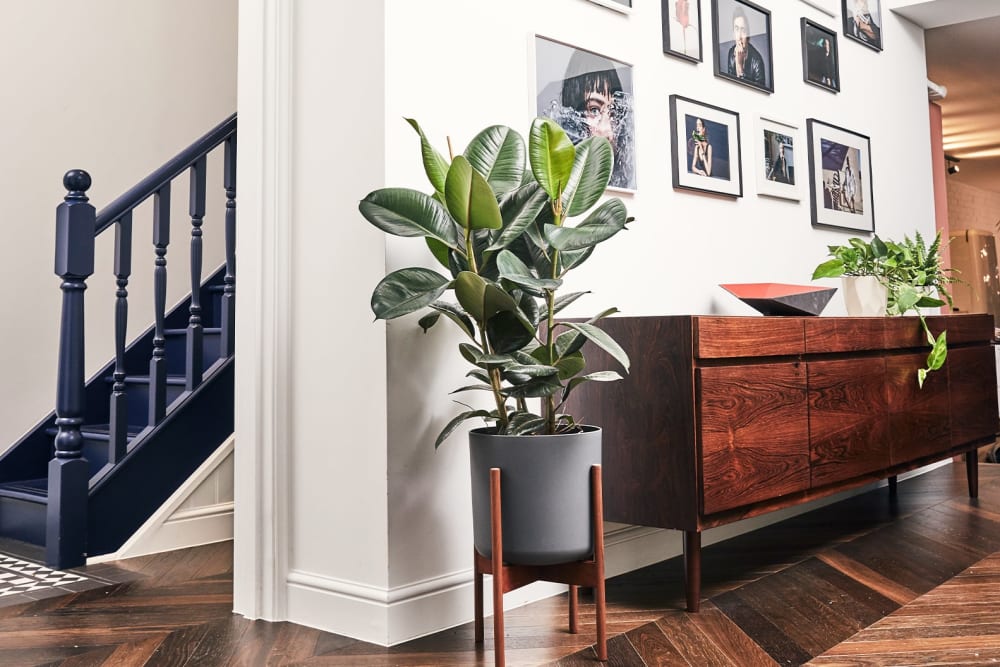
How often should I water my rubber plant?
As with most houseplants, how dry or wet the soil is can let you know if your plant needs a drink. Dip your finger about three inches into the soil. If your finger comes out mostly clean and dry, it’s time for a drink. If it’s moist with lots of soil sticking to it, check back in a couple days. Check more often during the spring and summer to keep your rubber plant hydrated when it’s hot.
Make sure you water evenly and thoroughly to reach every root. Drain your plant before putting it back in the decorative pot to avoid letting water sit at the bottom, as this can cause root rot. If your rubber plant’s leaves are turning yellow, brown, or even falling off, this could be a sign of overwatering.
How much light and humidity does my rubber plant need?
Their leaves can hold a lot of moisture, so normal room humidity is just fine for Rob, Robin and Melika. As a rule of thumb, it’s best to keep rubber plants in bright rooms, at least a few feet away from windows that get direct sunlight, where the humidity and temperature feels comfortable for you.
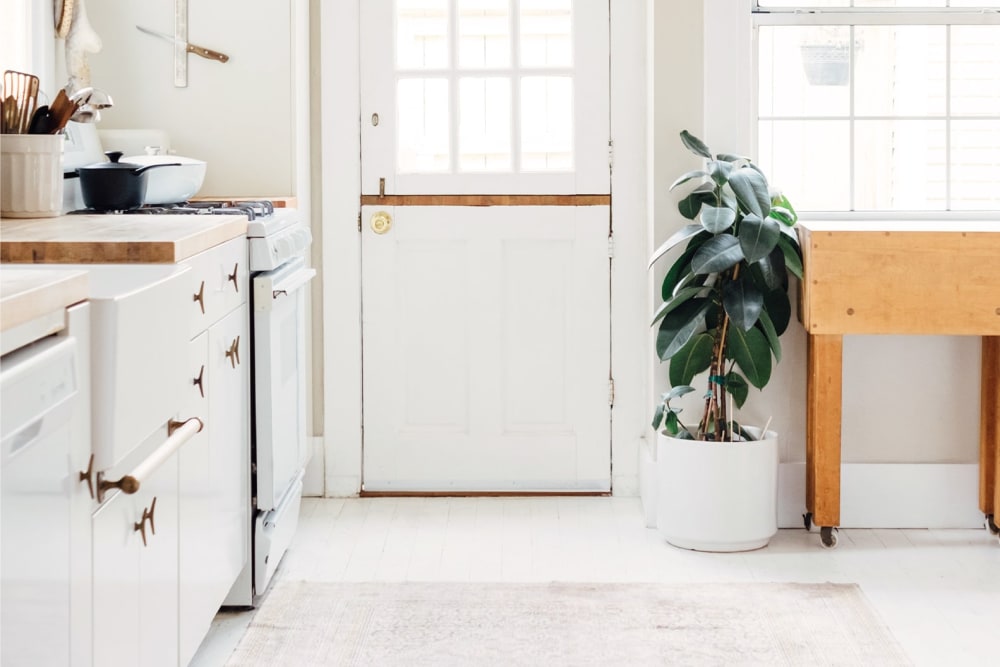
Repotting rubber plants
Rubber plants are fast growers, so make sure you check during the springtime if their roots are poking out of the nursery pot. If they are, it’s time to repot. This is so their roots have enough space to spread out, absorb nutrients and grow. Learn more about repotting here.
Show your rubber plant some extra love
During spring and summer, you can give rubber plants extra attention by treating them to liquid fertiliser once a month. Dilute this with an equal measure of water since rubber plants aren’t big feeders. Rubber plants also like their leaves to be moist and clean, so wipe the leaves with a cloth to keep dust away and spritz with water every few days.
In this article
Rewild your inbox
Plant tips. Special offers. No spam.
You might like
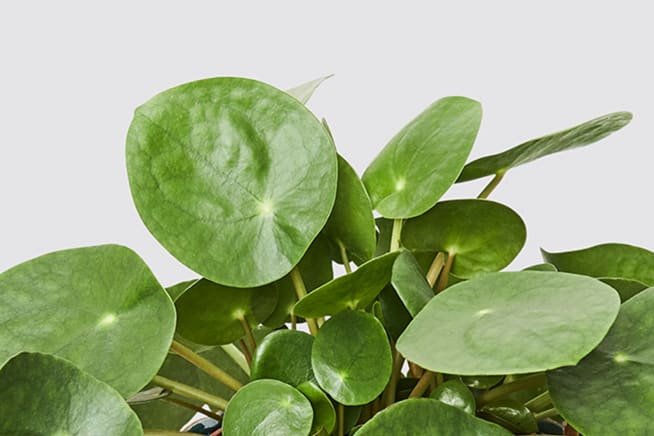
Complete guide to Chinese money plant care
The Chinese money plant is the perfect companion for even the busiest of schedules.
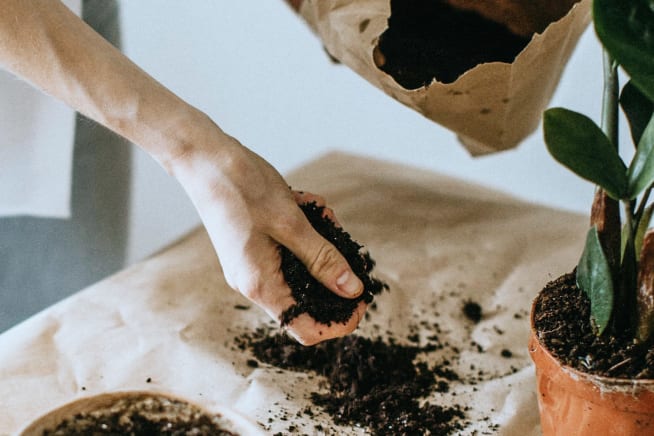
Complete guide to repotting
Learn how and when to upgrade your plant’s pot

How to make your plants cat-friendly
Help your furry friend and plant pals get along